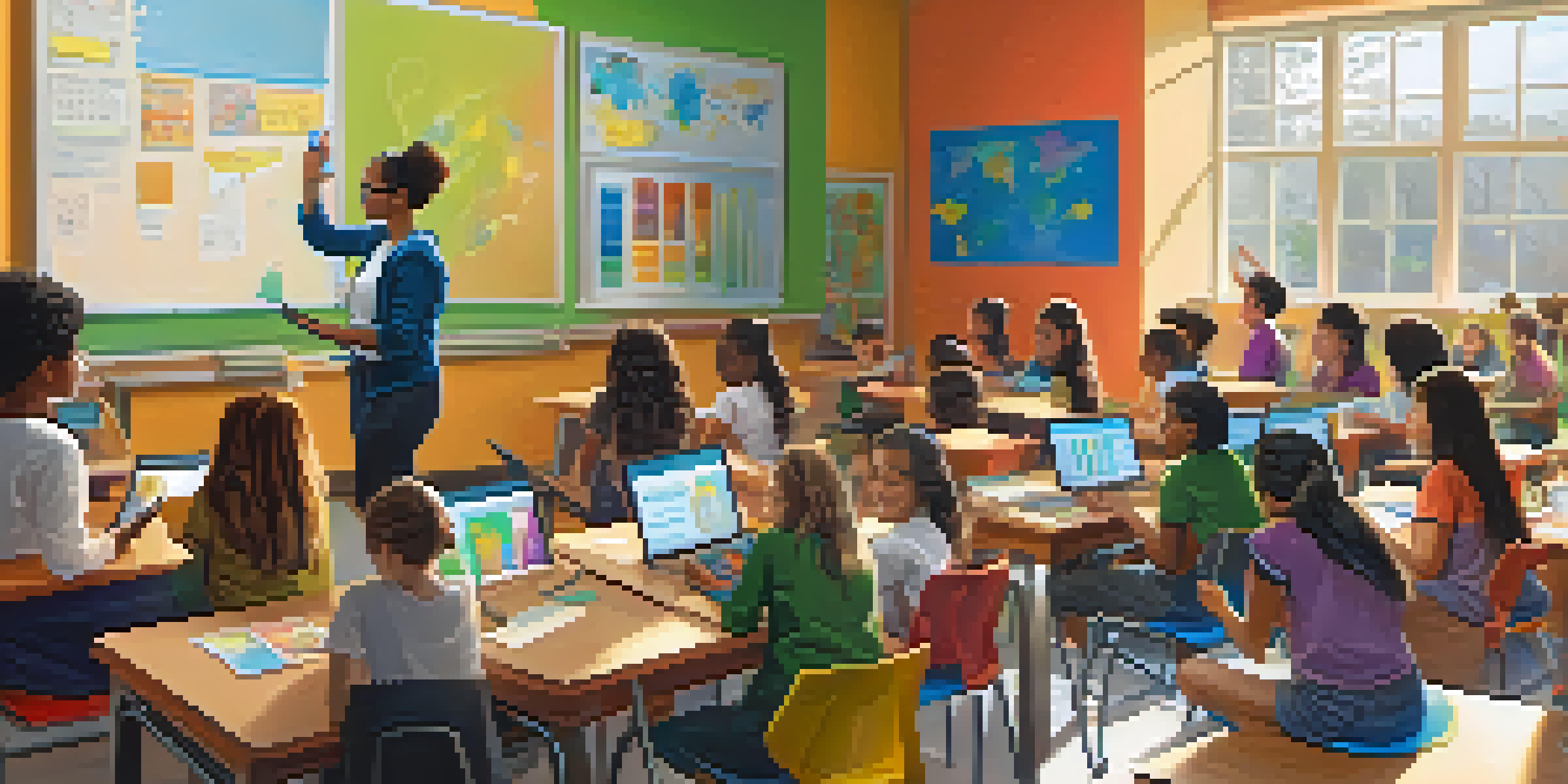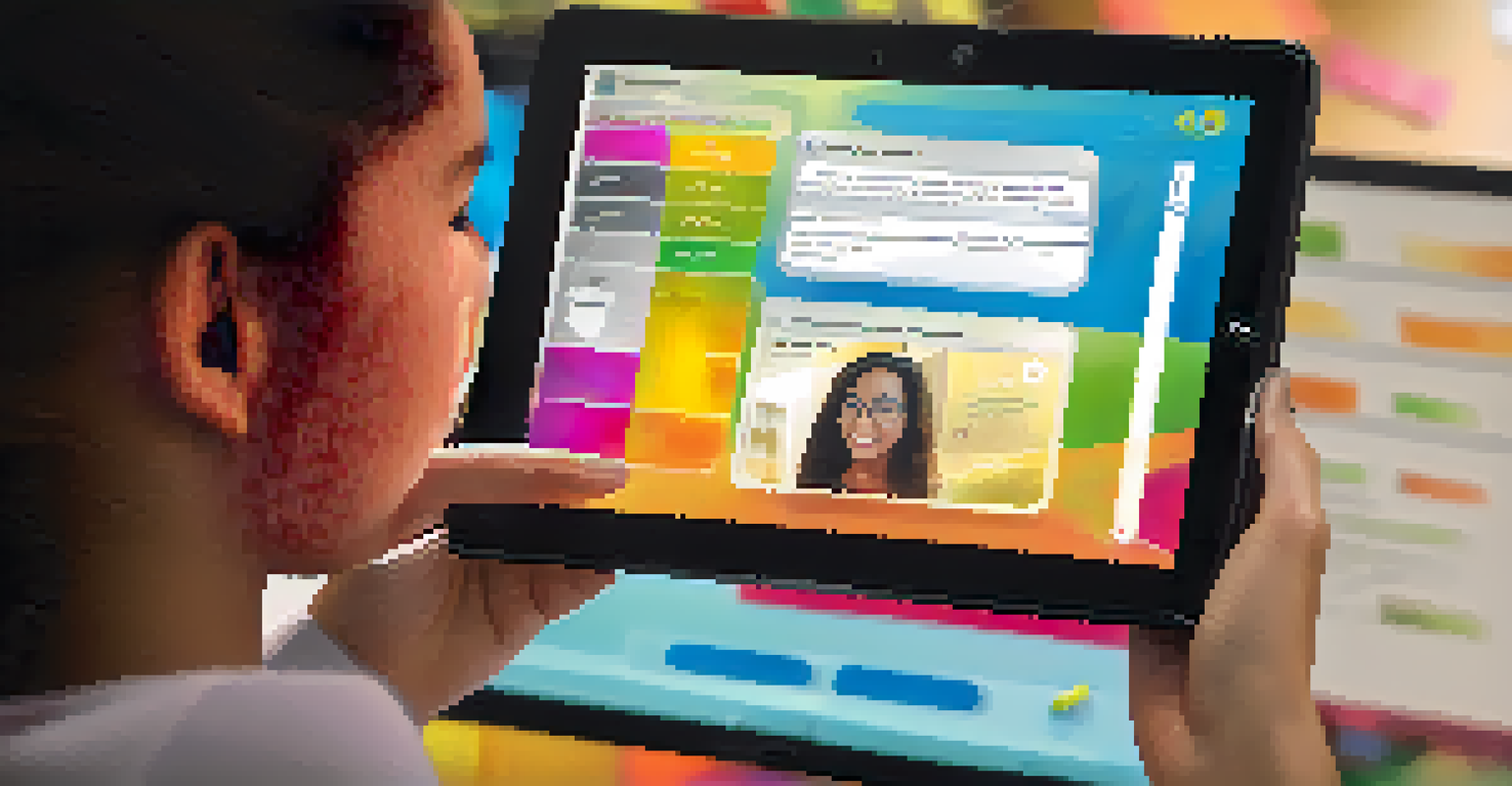The Benefits of Adaptive Learning for Diverse Learner Needs

Understanding Adaptive Learning and Its Purpose
Adaptive learning is an educational method that tailors content to meet the individual needs of each learner. Unlike traditional teaching, which often uses a one-size-fits-all approach, adaptive learning uses technology to assess a student's skills and knowledge. This personalized approach helps ensure that all students, regardless of their background or learning style, receive the support they need to succeed.
Personalization is the future of learning, and adaptive learning is at the forefront of this transformation.
The primary goal of adaptive learning is to enhance the learning experience by making it more relevant and engaging. By identifying gaps in knowledge and adjusting the material accordingly, educators can help students move at their own pace. This not only improves comprehension but also boosts confidence, as students can master concepts before progressing.
In a diverse classroom, adaptive learning can be particularly beneficial. It allows teachers to address various learning preferences, whether a student learns best through visual aids, hands-on activities, or auditory instruction. This flexibility creates a more inclusive environment where all learners can thrive.
Personalized Learning Paths for Every Student
One of the standout features of adaptive learning is its ability to create personalized learning paths. Each student receives a custom-tailored curriculum designed to suit their unique strengths and weaknesses. For instance, a student struggling with math concepts will receive targeted exercises that help reinforce those specific skills.

This personalization can significantly enhance student engagement. When learners see that the material is designed specifically for them, they are more likely to invest time and effort into their studies. As a result, students are less likely to feel overwhelmed or disengaged, which is often the case in traditional learning environments.
Personalized Learning Enhances Engagement
Adaptive learning tailors educational content to individual strengths and weaknesses, fostering greater student engagement and motivation.
Moreover, personalized learning paths encourage self-directed learning. Students become active participants in their education, taking ownership of their progress. As they navigate their tailored paths, they develop critical thinking and problem-solving skills that are essential for lifelong learning.
Immediate Feedback and Continuous Improvement
Adaptive learning platforms offer immediate feedback, which is crucial for effective learning. Unlike conventional methods where students may wait for days to receive their grades, adaptive learning systems provide instantaneous assessments. This real-time feedback allows students to identify areas for improvement right away and adjust their study habits accordingly.
Education is not the filling of a pail, but the lighting of a fire.
This quick turnaround can be a game-changer for student motivation. When learners receive prompt feedback, they can celebrate their successes and work on their weaknesses without delay. This continuous cycle of feedback and improvement helps maintain momentum, encouraging students to stay engaged and committed to their learning journey.
Additionally, immediate feedback helps educators monitor student progress more effectively. Teachers can quickly identify trends or challenges within the classroom and make adjustments to their teaching strategies. This responsiveness not only benefits individual learners but can also enhance overall classroom performance.
Accommodating Diverse Learning Styles and Paces
Every student has a unique learning style, whether visual, auditory, or kinesthetic. Adaptive learning recognizes these differences and accommodates them, making it easier for all students to grasp complex concepts. For example, a visual learner might benefit from infographics and charts, while an auditory learner could thrive with podcasts and discussions.
This adaptability also extends to the pace of learning. Some students may grasp concepts quickly while others may need more time to practice and understand. Adaptive learning systems can adjust the difficulty and pacing of content, ensuring that no student is left behind. This tailored approach helps create a more equitable learning environment.
Immediate Feedback Drives Improvement
With real-time assessments, adaptive learning enables students to identify areas for growth instantly, promoting continuous improvement and motivation.
By accommodating different learning styles and paces, adaptive learning fosters a sense of belonging among students. When learners feel their individual needs are acknowledged, they are more likely to participate actively and confidently in their education.
Data-Driven Insights for Educators
Adaptive learning platforms gather valuable data on student performance, offering educators insights that can enhance their teaching strategies. This data can reveal patterns, such as which concepts students struggle with the most or which resources are most effective. With this knowledge, teachers can tailor their instruction to better meet the needs of their students.
In addition to informing instruction, data-driven insights can help educators track progress over time. By analyzing performance trends, teachers can identify areas where students may need additional support or enrichment. This proactive approach makes it easier for educators to intervene before minor struggles become significant issues.
Furthermore, these insights can foster collaboration among educators. By sharing data and strategies, teachers can collectively enhance the learning experience for all students. This collaborative spirit ultimately leads to a more supportive and effective educational environment.
Scalable Solutions for Diverse Educational Settings
Adaptive learning technology provides scalable solutions that can be implemented across various educational settings, from classrooms to online courses. This flexibility allows institutions to adopt adaptive learning without overhauling their entire curriculum. Schools can integrate these systems gradually, making it easier to meet diverse learner needs.
For example, in a large classroom with students of varying abilities, adaptive learning can ensure that everyone receives appropriate challenges and support. This scalability means that educators can focus on teaching rather than managing a wide range of learning levels simultaneously. It streamlines the educational process, creating a more harmonious learning environment.
Accommodating Diverse Learning Styles
By recognizing and adapting to various learning styles and paces, adaptive learning creates an inclusive environment where all students can thrive.
Moreover, the scalability of adaptive learning makes it an attractive option for online education. As more learners turn to online platforms, adaptive learning can personalize their experience just as effectively as in-person instruction. This ensures that all students, regardless of their location or background, have access to the quality education they deserve.
Enhancing Student Engagement and Motivation
One of the most significant benefits of adaptive learning is its ability to enhance student engagement and motivation. When learning is tailored to individual needs, students are more likely to feel invested in their education. This increased motivation can lead to better attendance, improved performance, and a more positive attitude towards learning.
Gamification elements often incorporated in adaptive learning platforms, such as badges and rewards, can further boost student engagement. These features create a sense of achievement as learners progress through their personalized paths. When students see their hard work recognized, they’re encouraged to strive for even greater accomplishments.

Additionally, adaptive learning can help students set and achieve personal learning goals. By tracking their progress on a customized platform, learners can celebrate their milestones and take pride in their accomplishments. This sense of ownership over their learning journey fosters a deeper connection to the material and encourages lifelong learning.
Preparing Students for Future Learning and Careers
Adaptive learning not only supports current educational needs but also prepares students for future learning and careers. By fostering critical thinking, problem-solving, and self-directed learning skills, adaptive systems equip students with the tools they need to navigate an ever-changing world. These skills are essential for success in higher education and the modern workforce.
Moreover, adaptive learning encourages a growth mindset, helping students understand that effort and perseverance lead to improvement. In today’s fast-paced environment, the ability to adapt and learn continuously is invaluable. Students who embrace this mindset are better prepared to face challenges and seize opportunities in their future endeavors.
Ultimately, by embracing adaptive learning, we’re not only enhancing the educational experience but also shaping well-rounded individuals ready to contribute positively to society. As we invest in adaptive learning solutions, we’re paving the way for a brighter future for all learners.